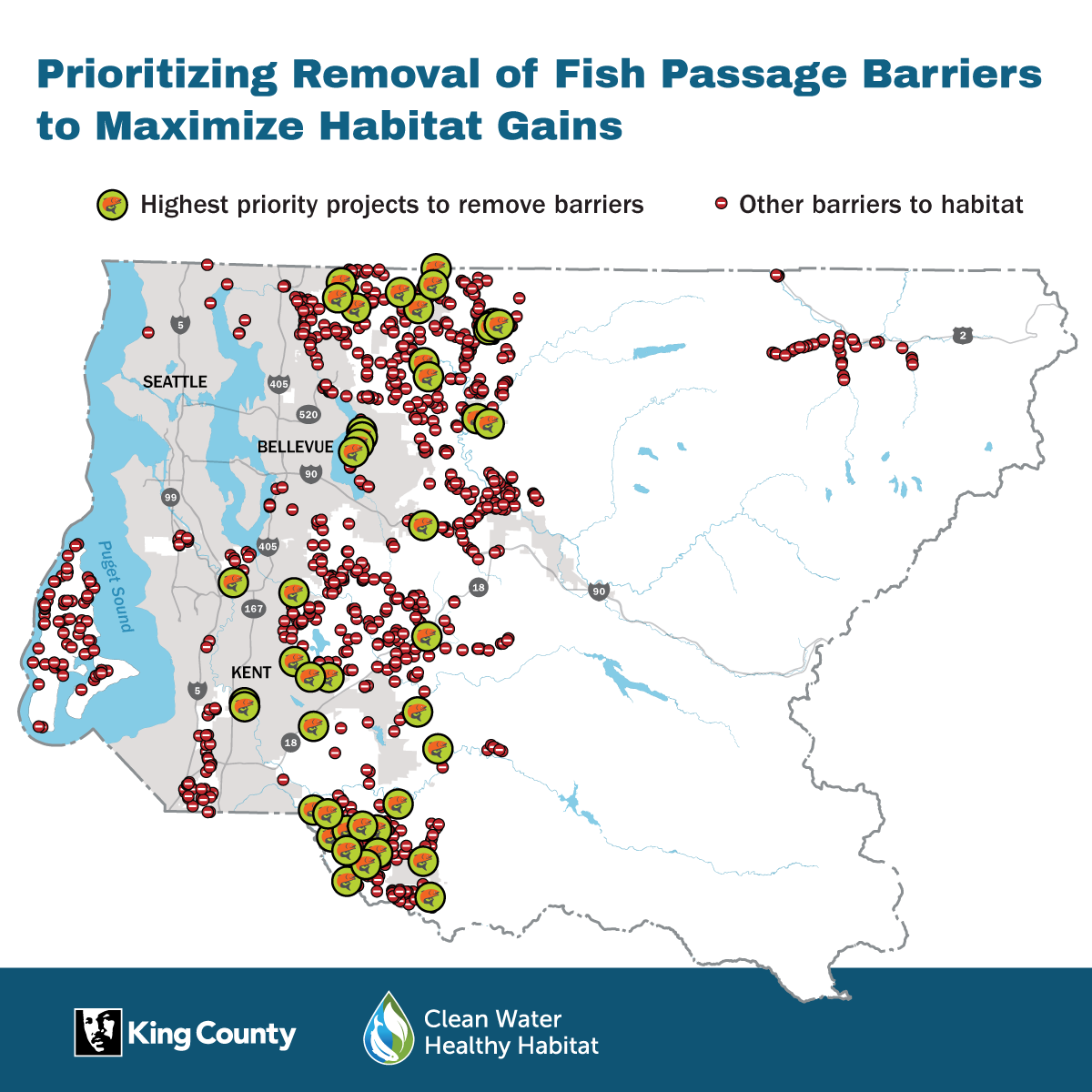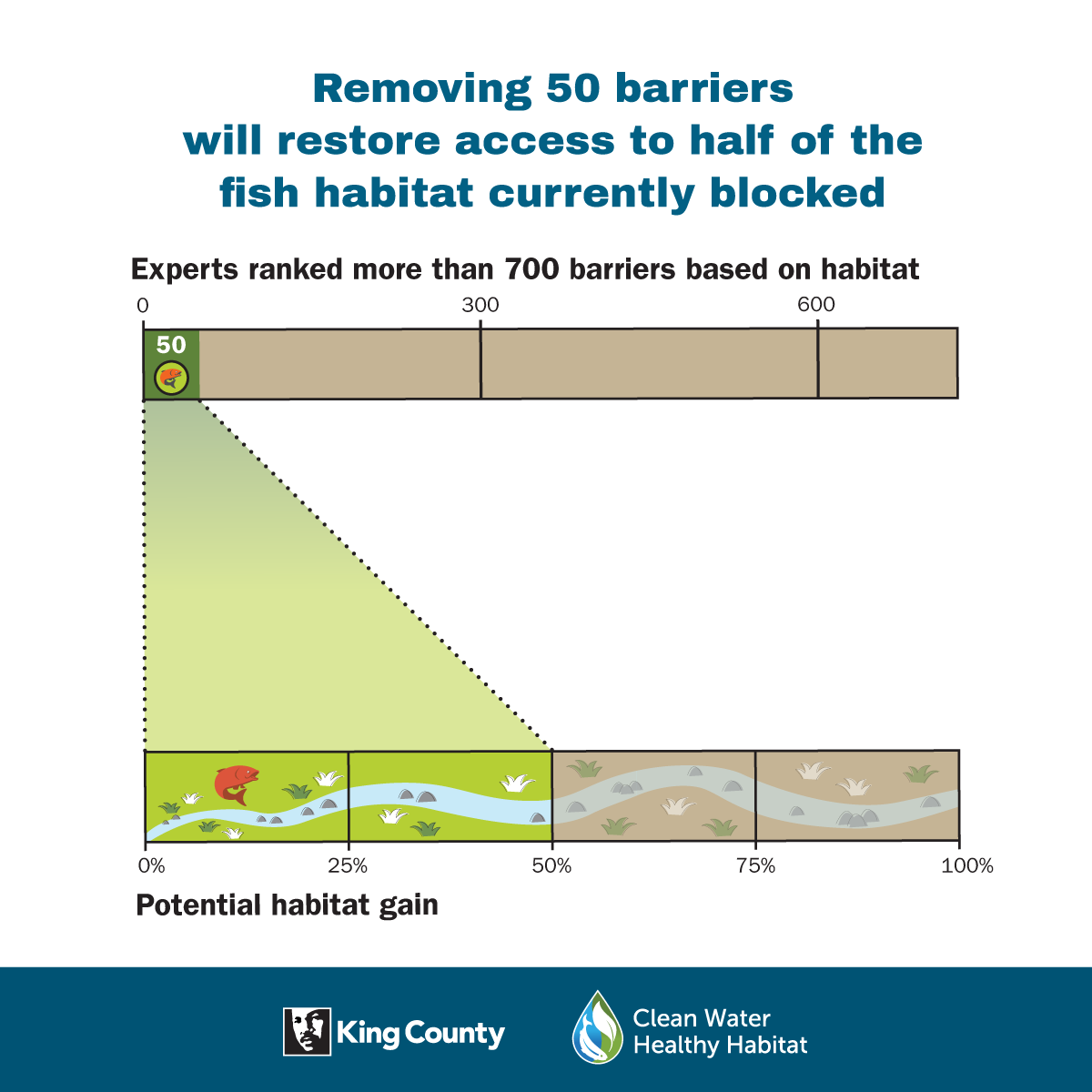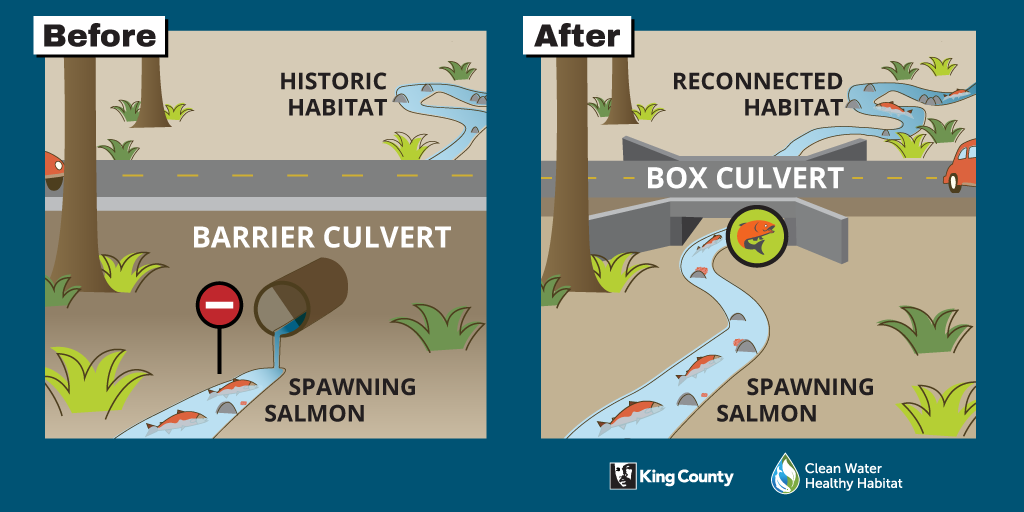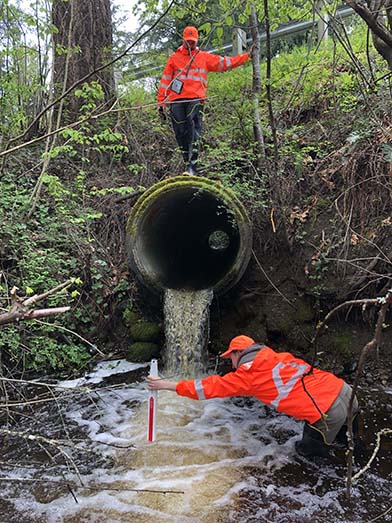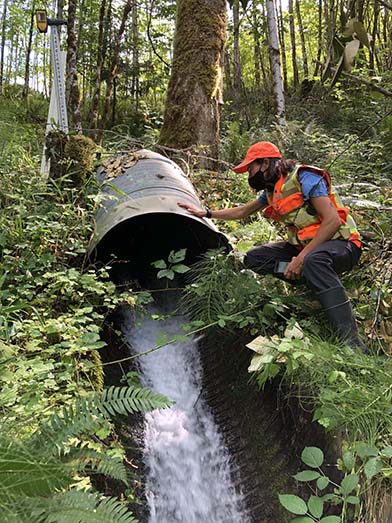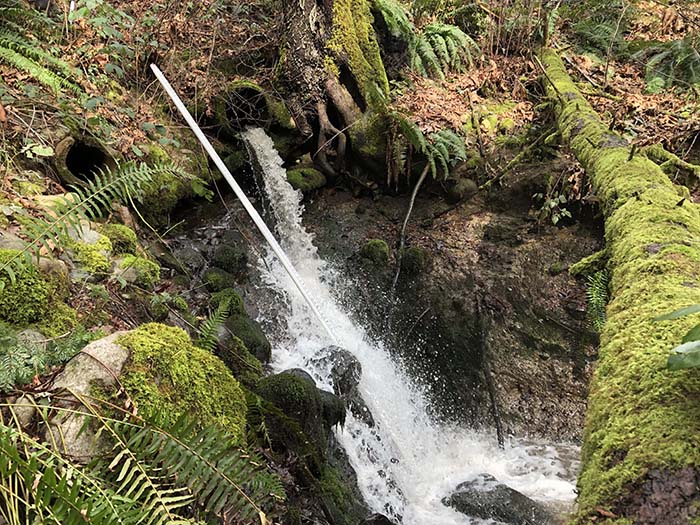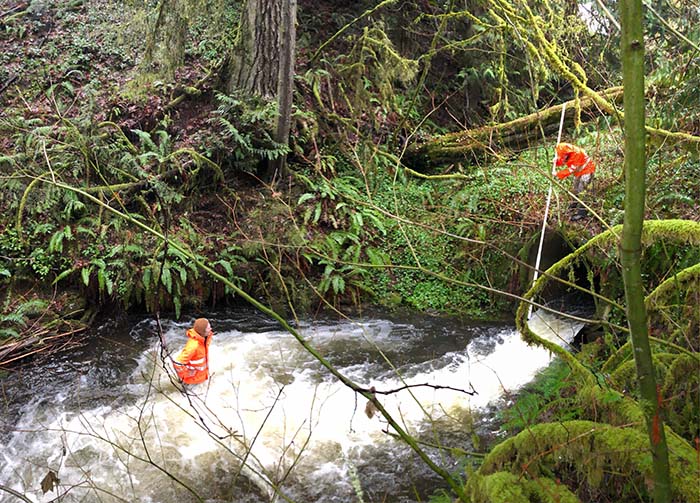King County experts have identified the best opportunities to restore access to the most salmon habitat, putting the region in a strong position for new federal investments
Summary
King County is in a strong position for new federal infrastructure investments that remedy barriers that prevent salmon from swimming freely upstream to vital fish habitat, thanks to a comprehensive field study by staff scientists and engineers. The recommendations are based on an inspection of more than 3,000 potential barriers.
Story
A three-year study conducted by King County scientists and engineers has identified the best stream locations to remove barriers that prevent salmon from swimming to high-quality habitat, putting the county in a strong position for new federal infrastructure investments.
The field team of experts inspected more than 3,000 locations where habitat is possibly blocked by county-owned roads and trails. They ranked more than 700 of the identified barriers and determined that completing 50 restoration projects would restore access to at least half of the habitat that is currently blocked.
The inventory and prioritization will make King County highly competitive for local, state, and federal grants – including the federal Bipartisan Infrastructure Bill – that fund projects to restore access to high-quality habitat, which is critical to the survival of native salmon and southern resident orcas that rely on them as a food source.
“Thanks to outstanding work by our team of leading experts, we know precisely where we can produce the best results for the most salmon habitat as quickly as possible,” said King County Executive Dow Constantine. “The field team’s solid recommendations – based on their inspection of more than 3,000 potential barriers to upstream habitat – makes our region one of the most shovel ready in the country for new federal infrastructure investments.”
Most of the barriers to salmon habitat are metal or concrete pipes, known as culverts, that were installed below roads, trails, and railroads during the 20th century so that streams could flow underneath. Unfortunately, many of the older culverts are so long, straight, and steep that they prevent fish from swimming through them.
In many cases, the culverts resemble firehoses, pushing water at a high velocity and making it nearly impossible for salmon to swim through. In other cases, the flows from the culvert over time erode a deep hole in the streambed downstream, preventing fish from being able to jump high enough into the culvert so they can continue to swim further upstream.
Modern culverts are designed more like arches than pipes, built over slower streams that can naturally flow underneath roads and trails with no barriers for salmon.
Executive Constantine in 2019 created a new position at the King County Department of Natural Resources and Parks to lead an inventory of barriers to fish habitat and determine which projects would restore access to the most habitat as quickly as possible.
Without the inventory and prioritization, restoring fish passage would be more random. Instead, the field team has determined that rectifying about 5 percent of the 700 barriers they ranked would reopen at least half of the habitat that is currently blocked by county-owned roads and trails.
U.S. Sen. Maria Cantwell authored the section of the federal Bipartisan Infrastructure Bill that will provide $1 billion for projects that address culverts blocking salmon migration. If King County successfully competes for the federal funding, it could potentially cut the amount of time it would take to construct the identified priority projects in half, from 20 years to 10.
Making it possible for more salmon to return to restored habitat
King County and its partners are improving habitat throughout the region, including the Rainbow Bend and Riverbend projects along the Cedar River, the restoration site known čakwab, pronounced "chock-wob," along the Green River, the Lower Tolt River Floodplain Restoration Project in the Snoqualmie Valley, and the Bear Creek restoration project near Redmond.
Removing barriers to those protected and restored habitats will maximize the benefits for native salmon and the southern resident orcas that rely on them as a food source.
Under the direction of Executive Constantine, King County has increased funding to support work by multiple divisions – Water and Land Resources, Parks, Roads, and Permitting – to restore salmon access to high-quality habitat at a faster pace. Aligning these efforts is the centerpiece of Clean Water Healthy Habitat, an initiative Executive Constantine launched in 2019 to produce better results faster for people, salmon, and orcas.
Images
Relevant links
- VIDEO: How King County experts conducted an inventory of fish passages
- King County Fish Passage Restoration Program
Quotes
Thanks to outstanding work by our team of leading experts, we know precisely where we can produce the best results for the most salmon habitat as quickly as possible. The field team’s solid recommendations – based on their inspection of more than 3,000 potential barriers to upstream habitat – makes our region one of the most shovel ready in the country for new federal infrastructure investments.
For more information, contact:
Chad Lewis, Department of Natural Resources and Parks, 206-263-1250

 Translate
Translate
